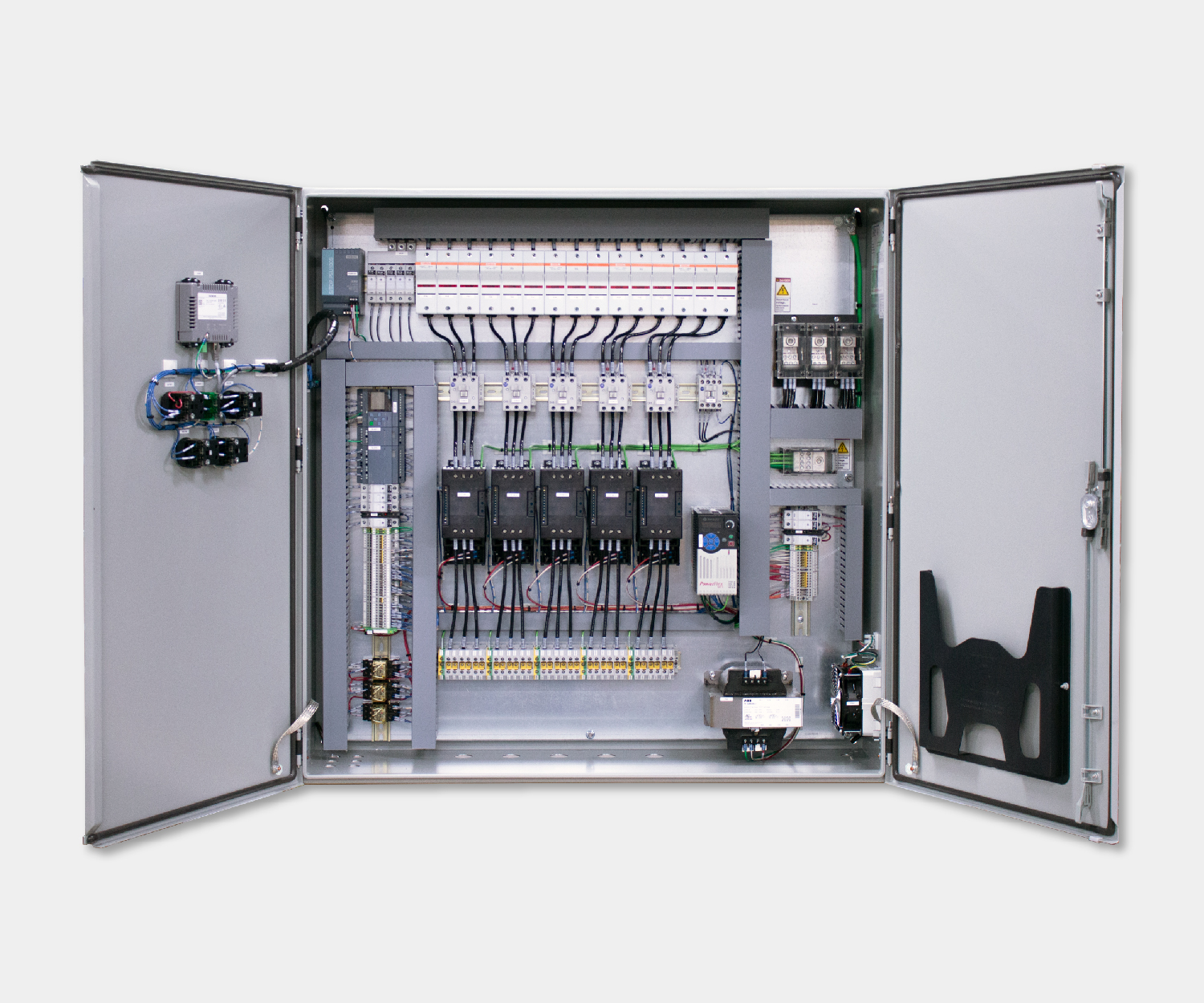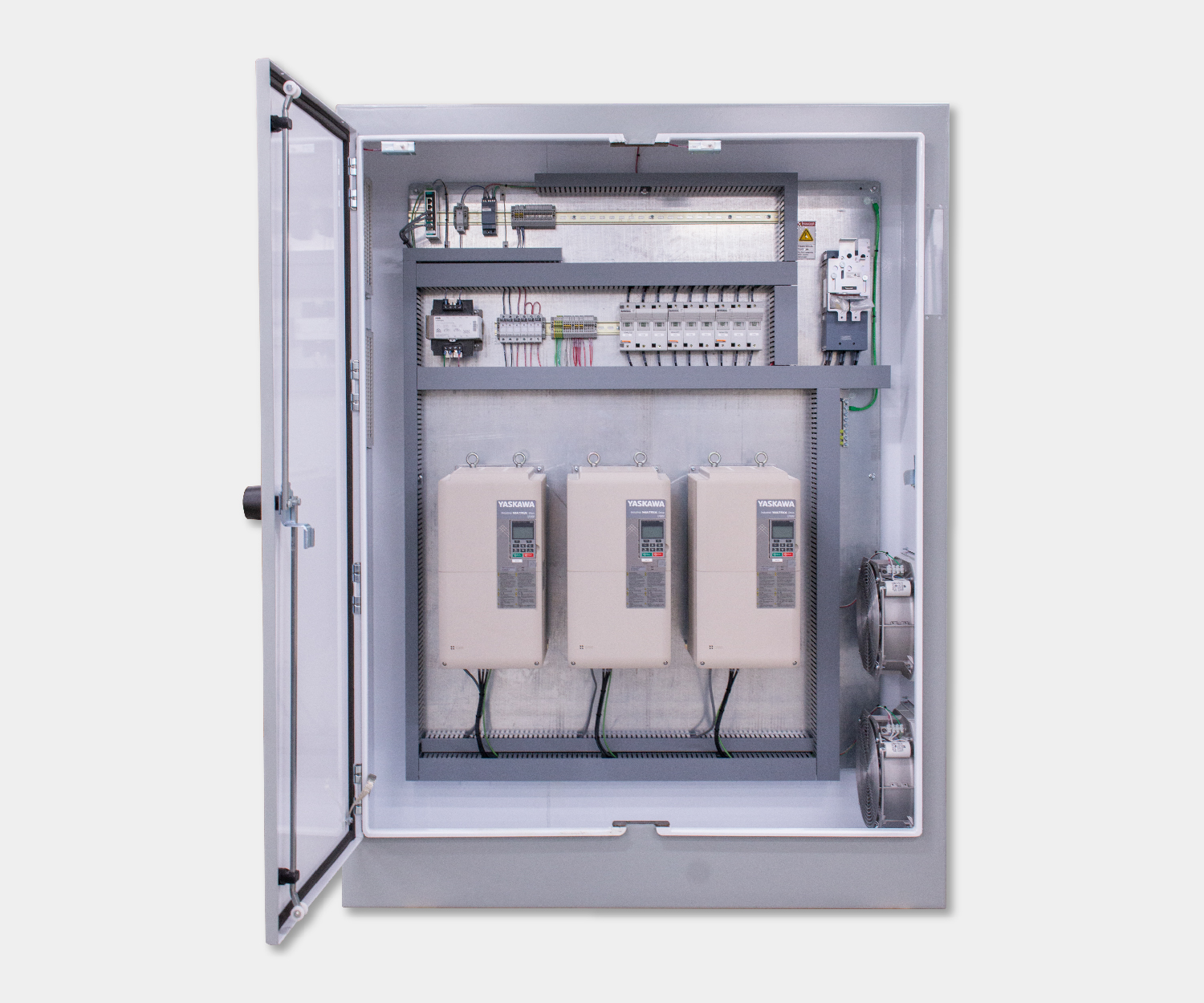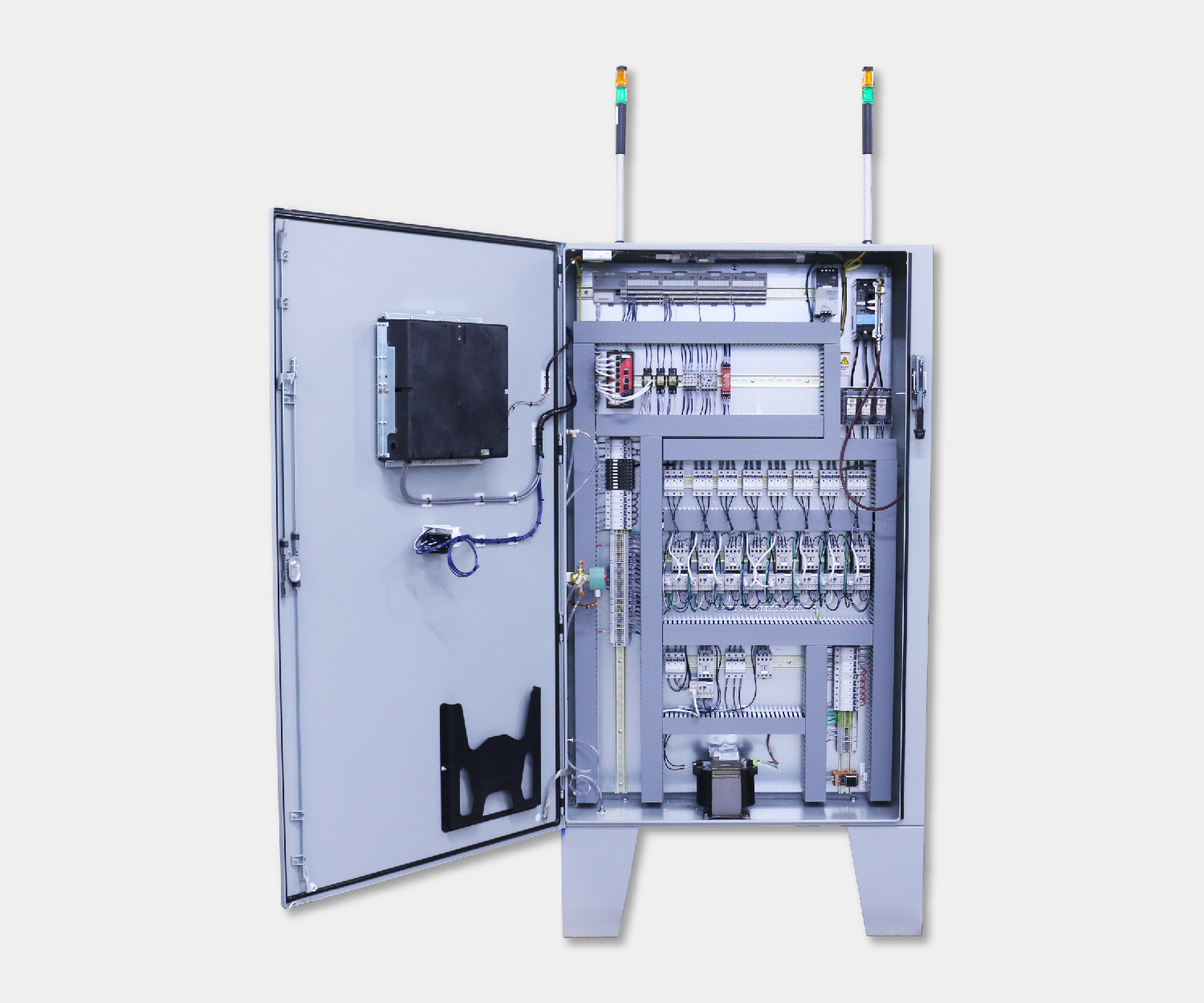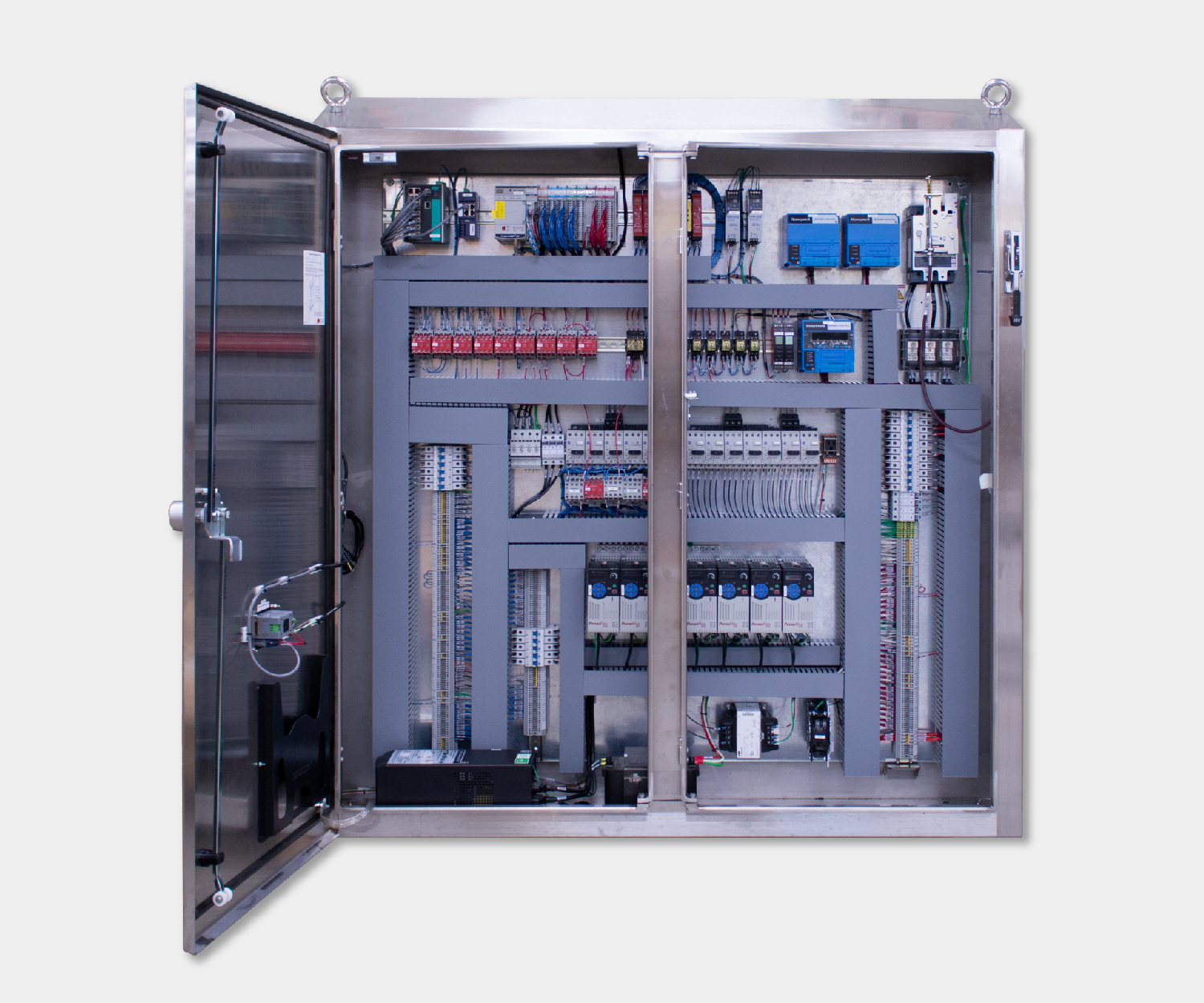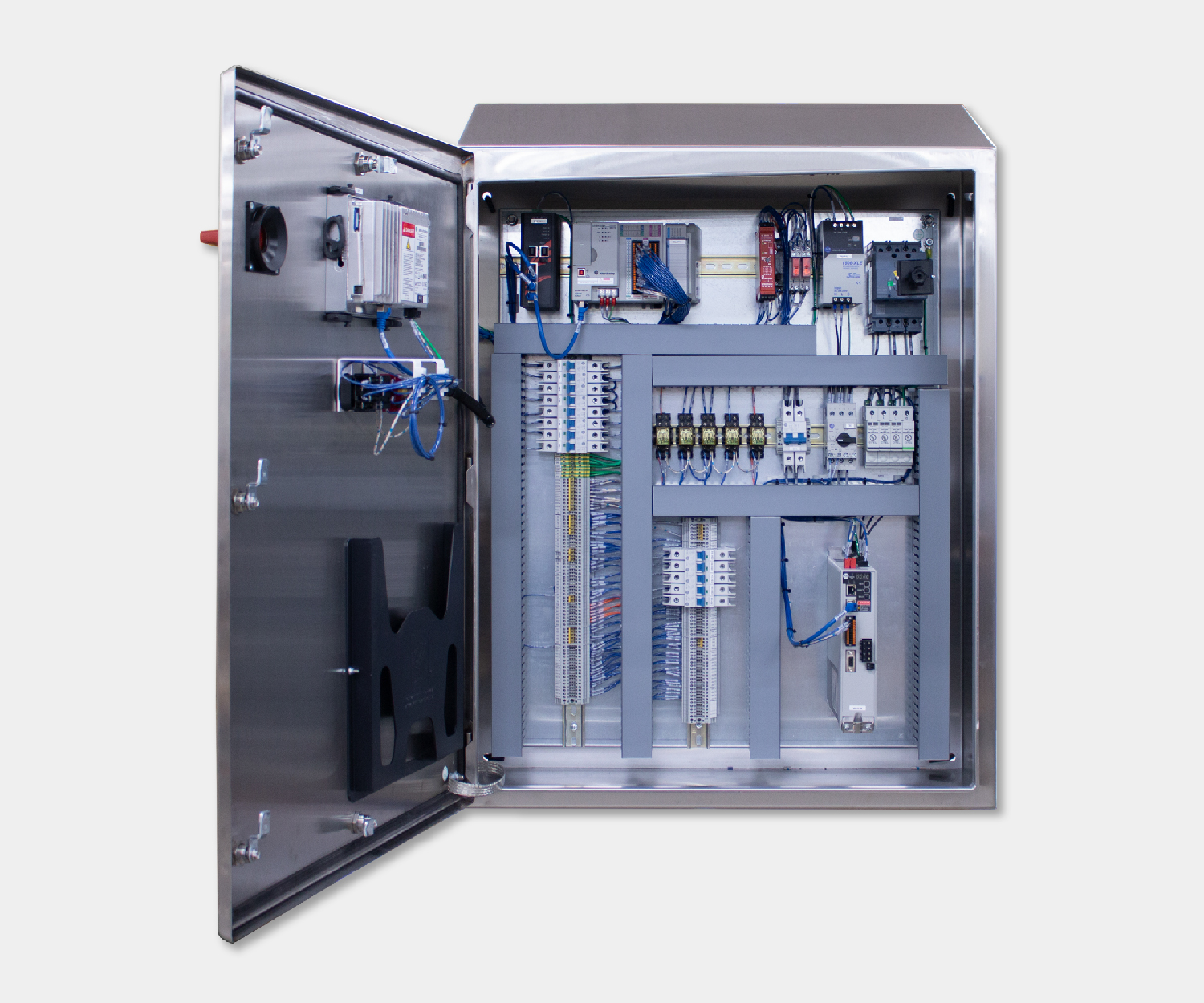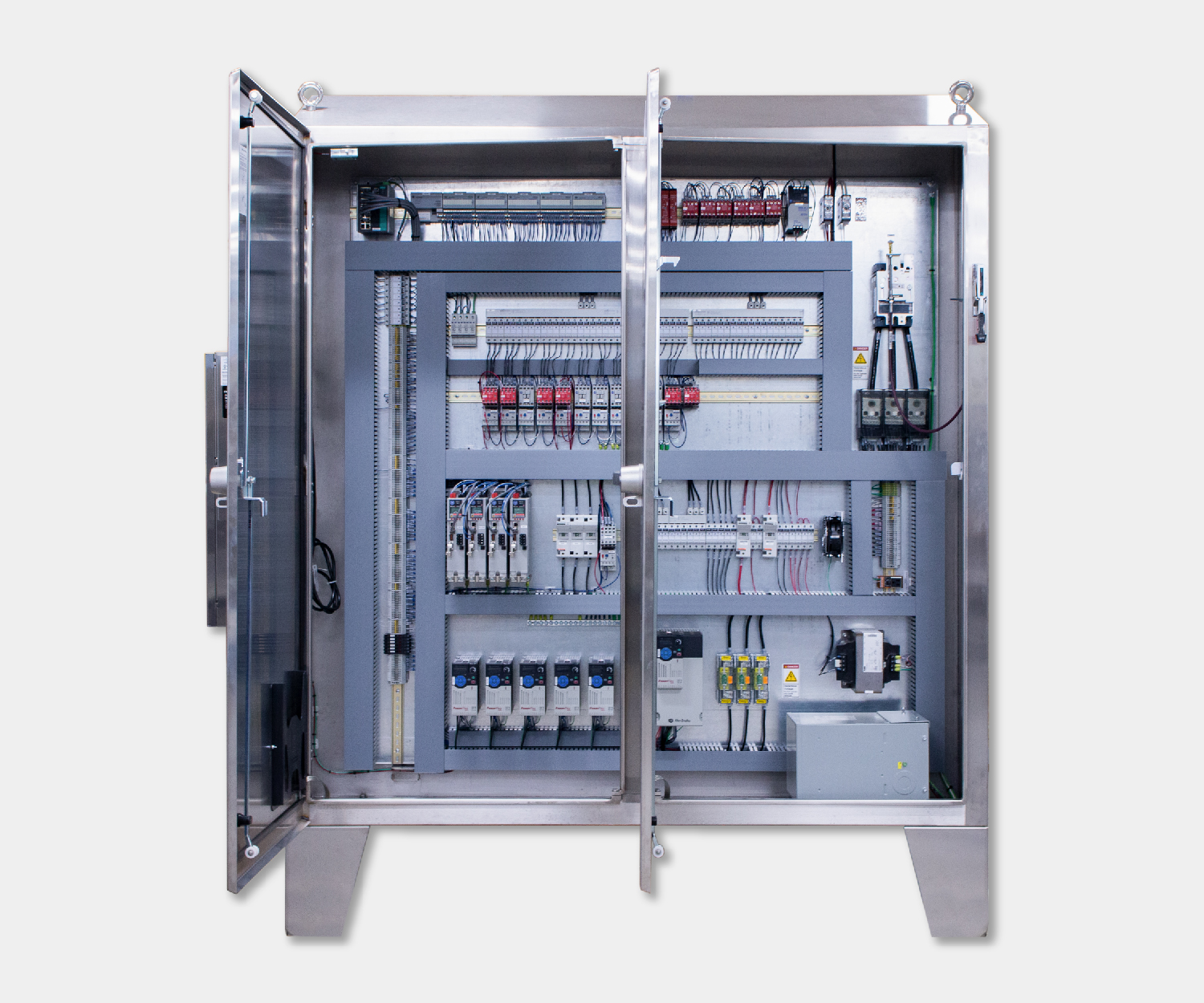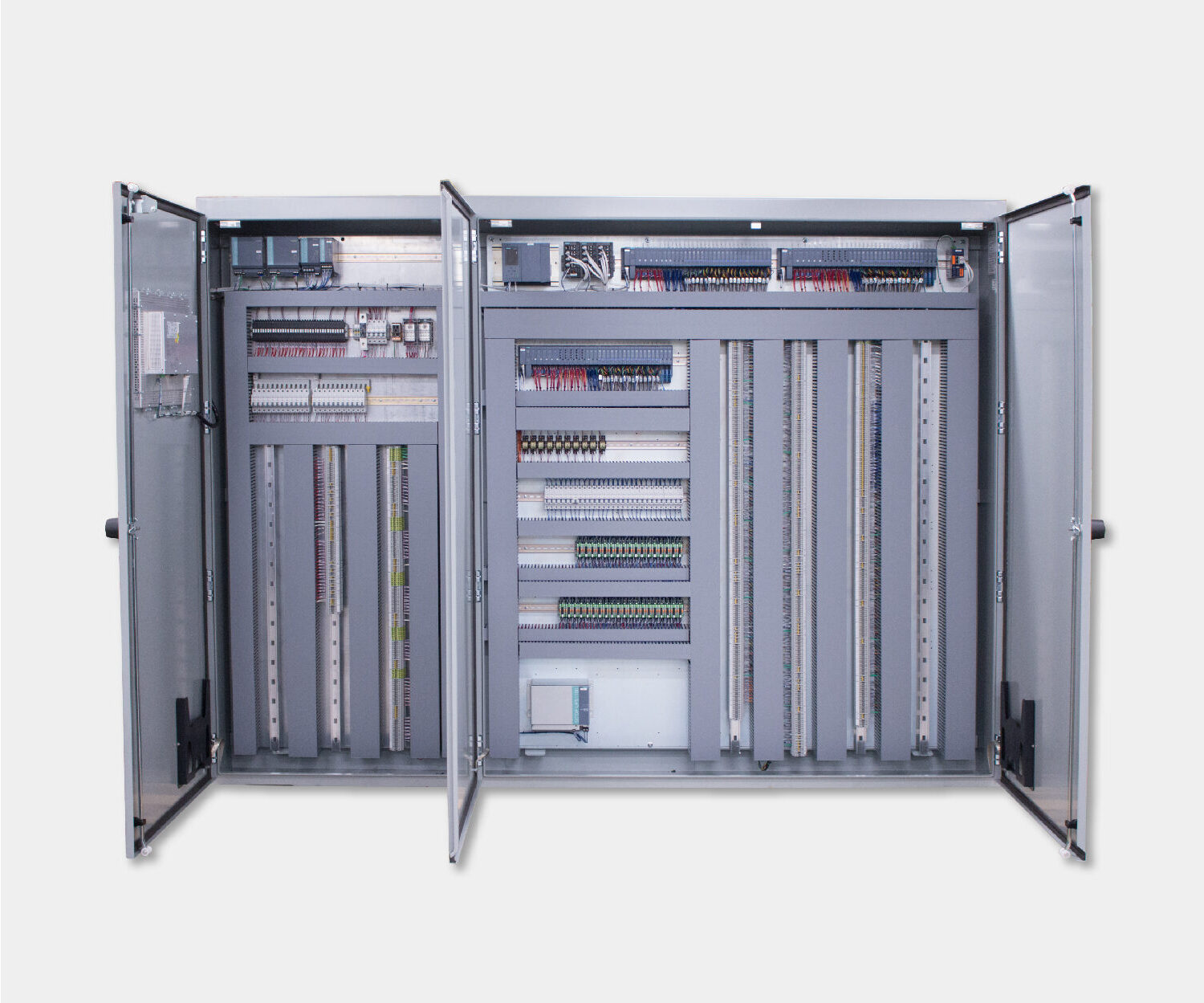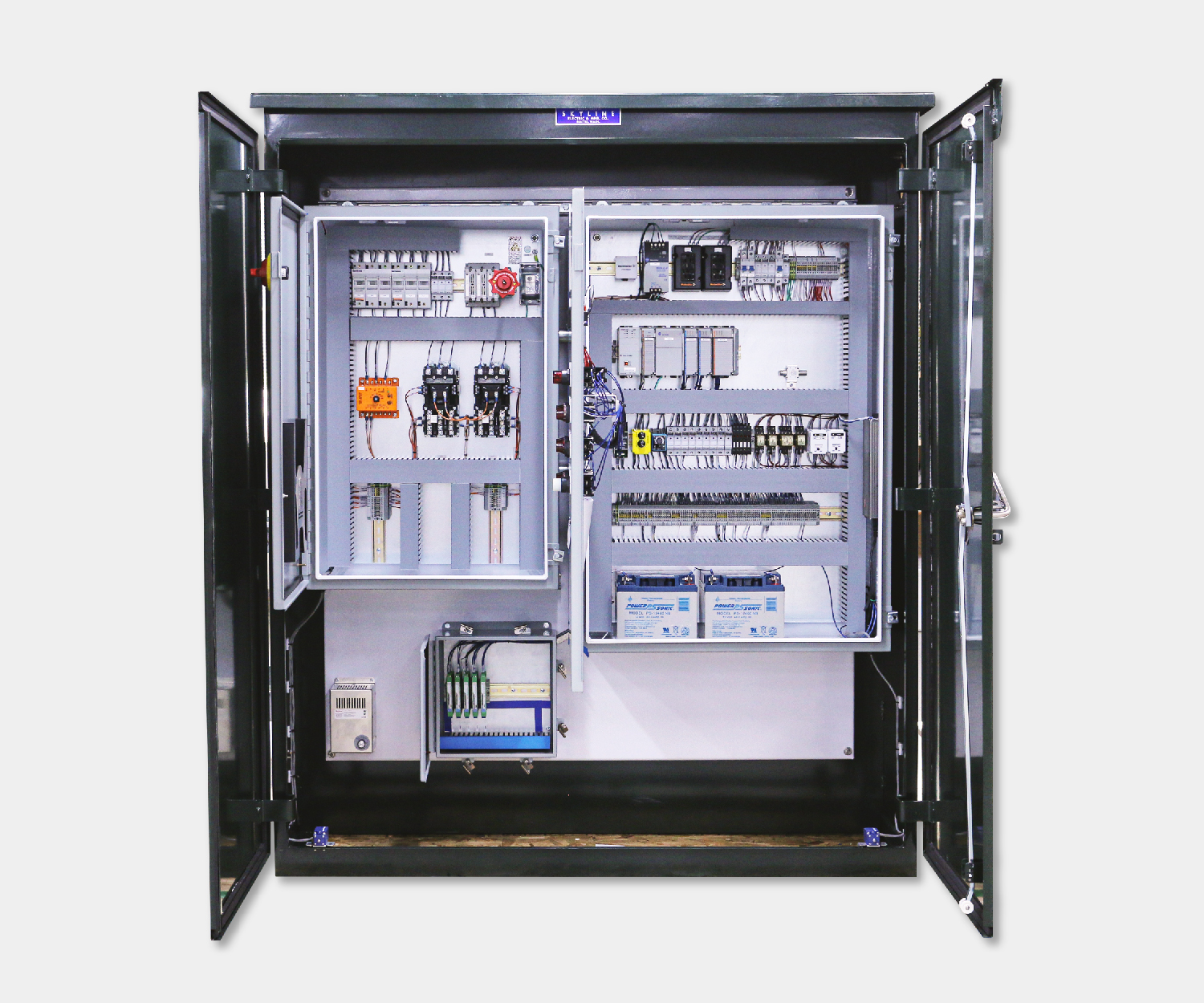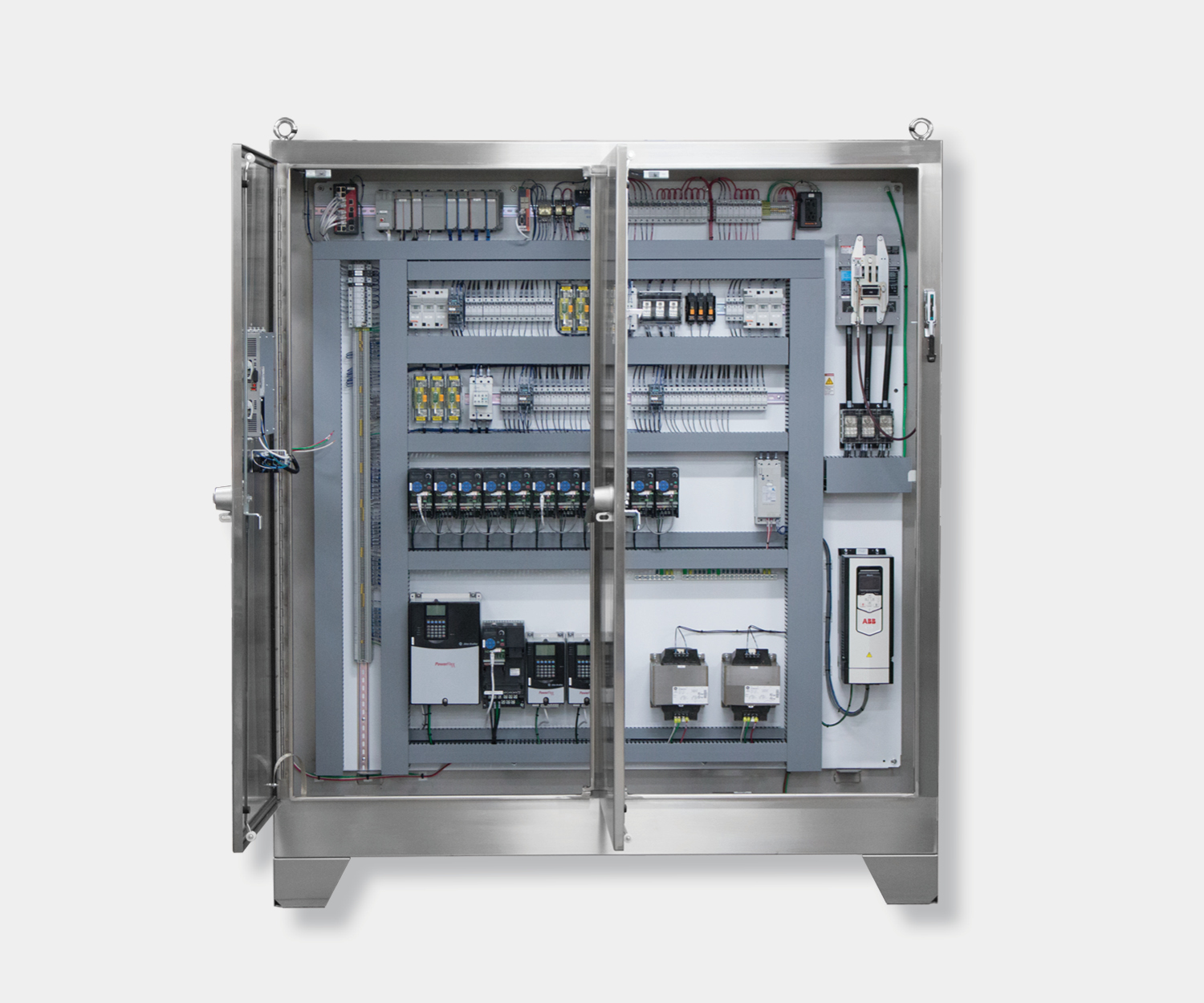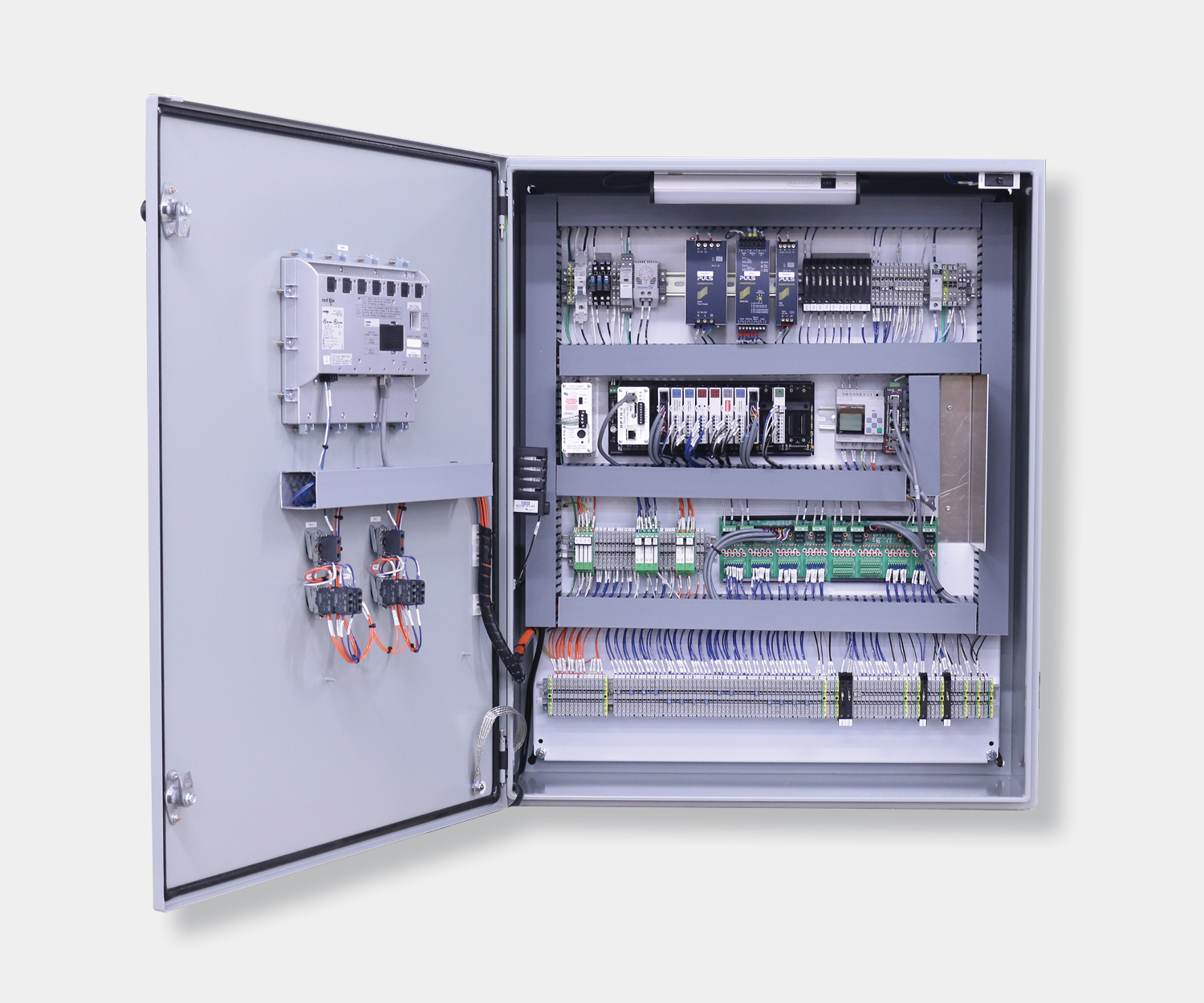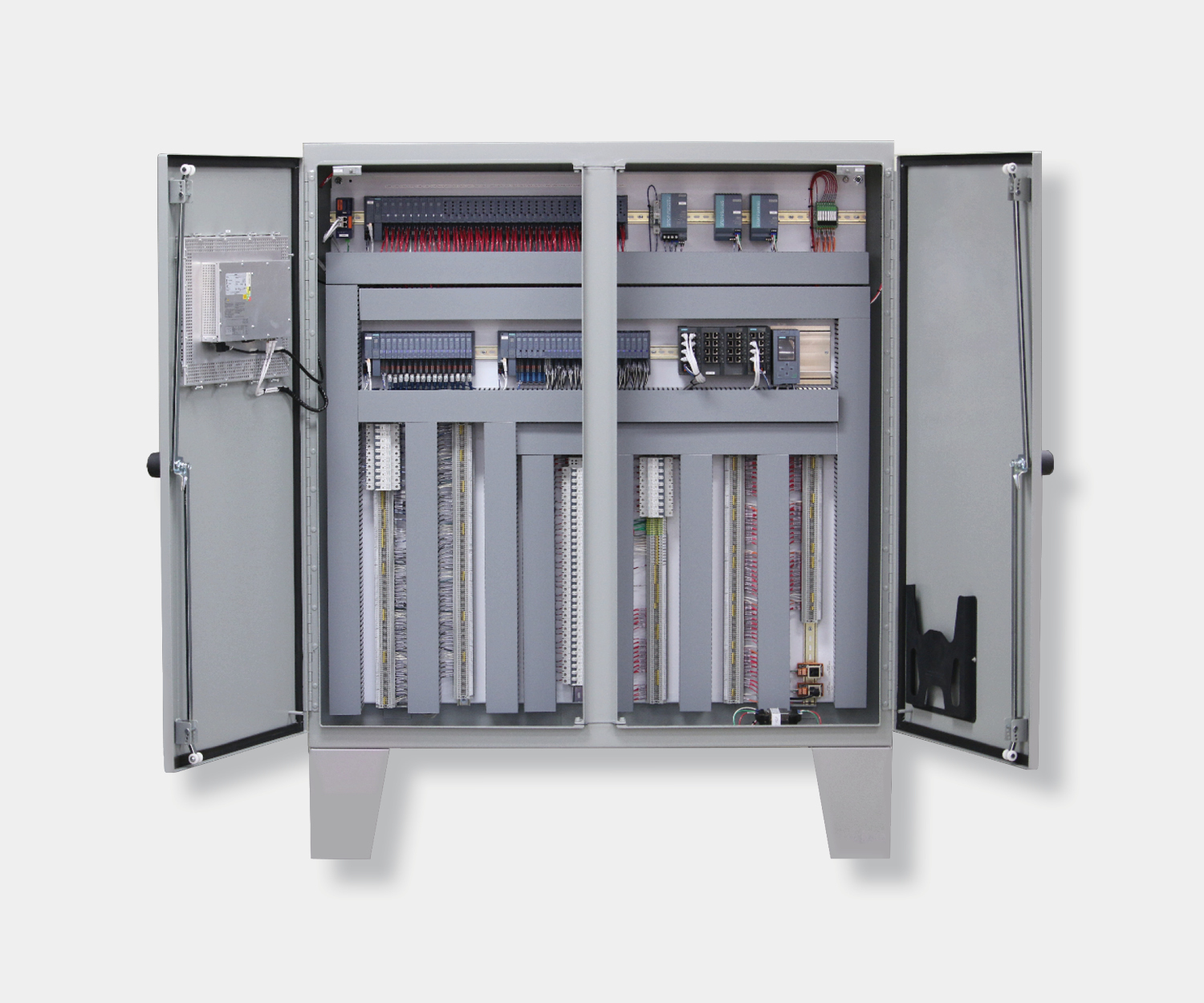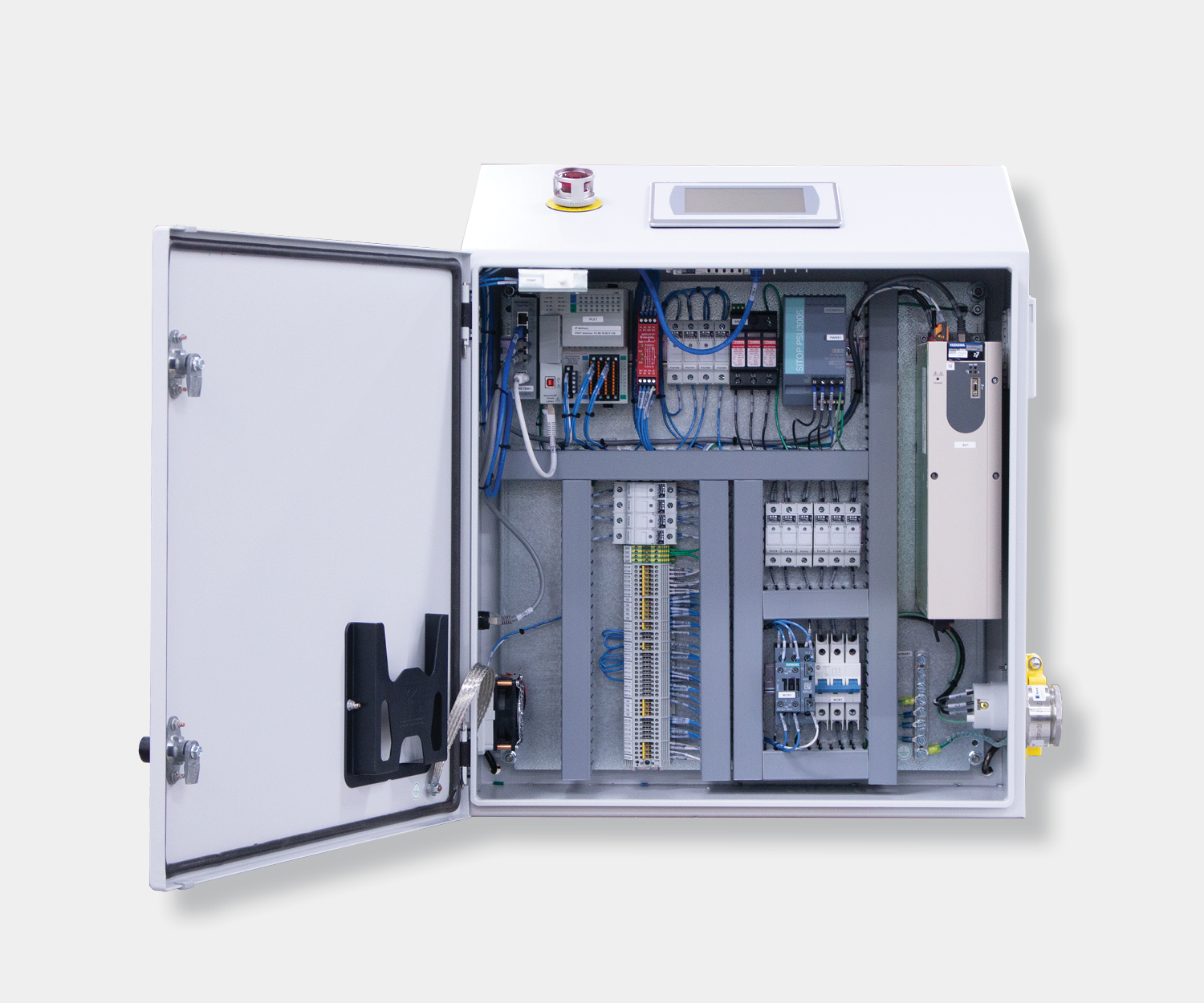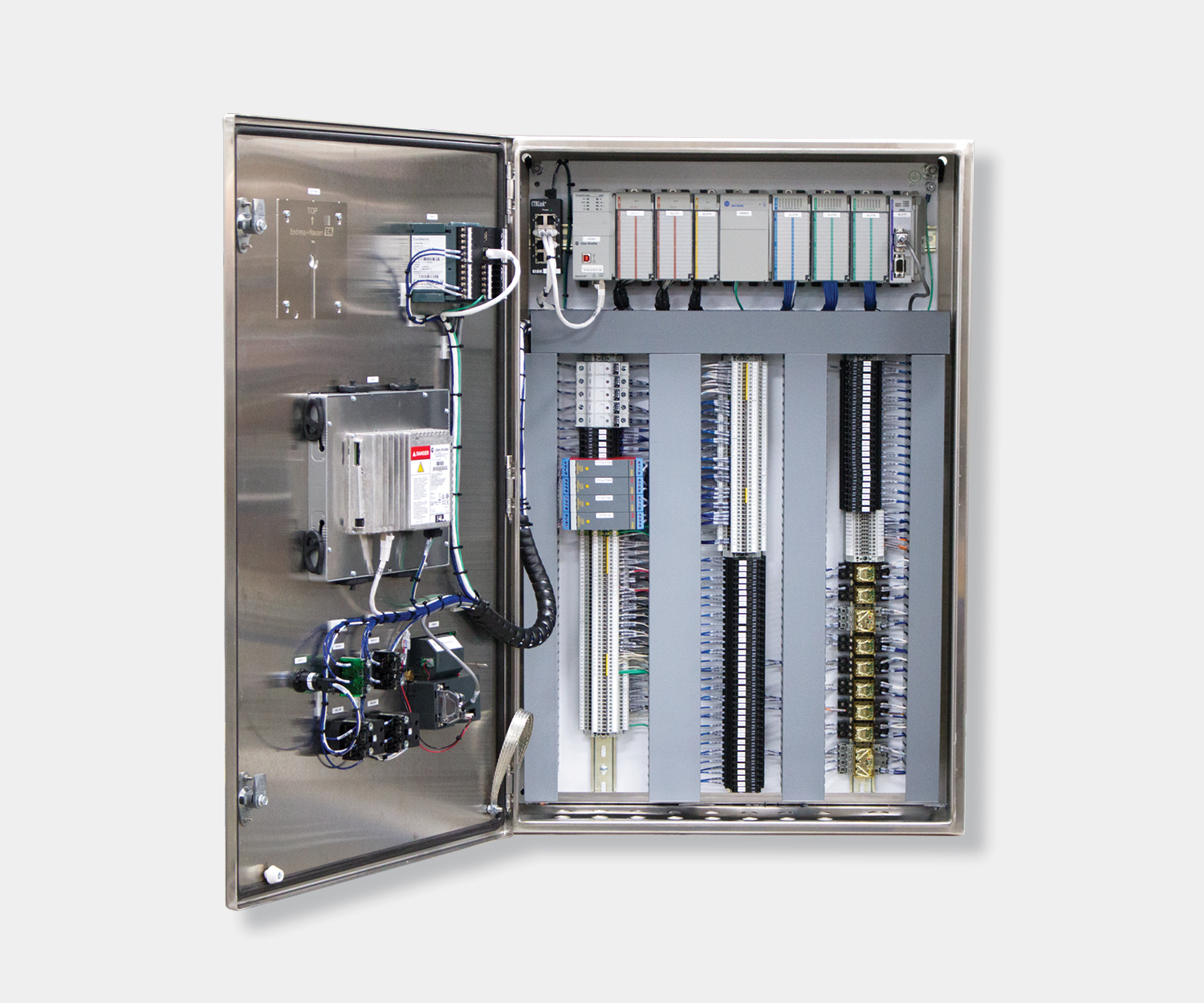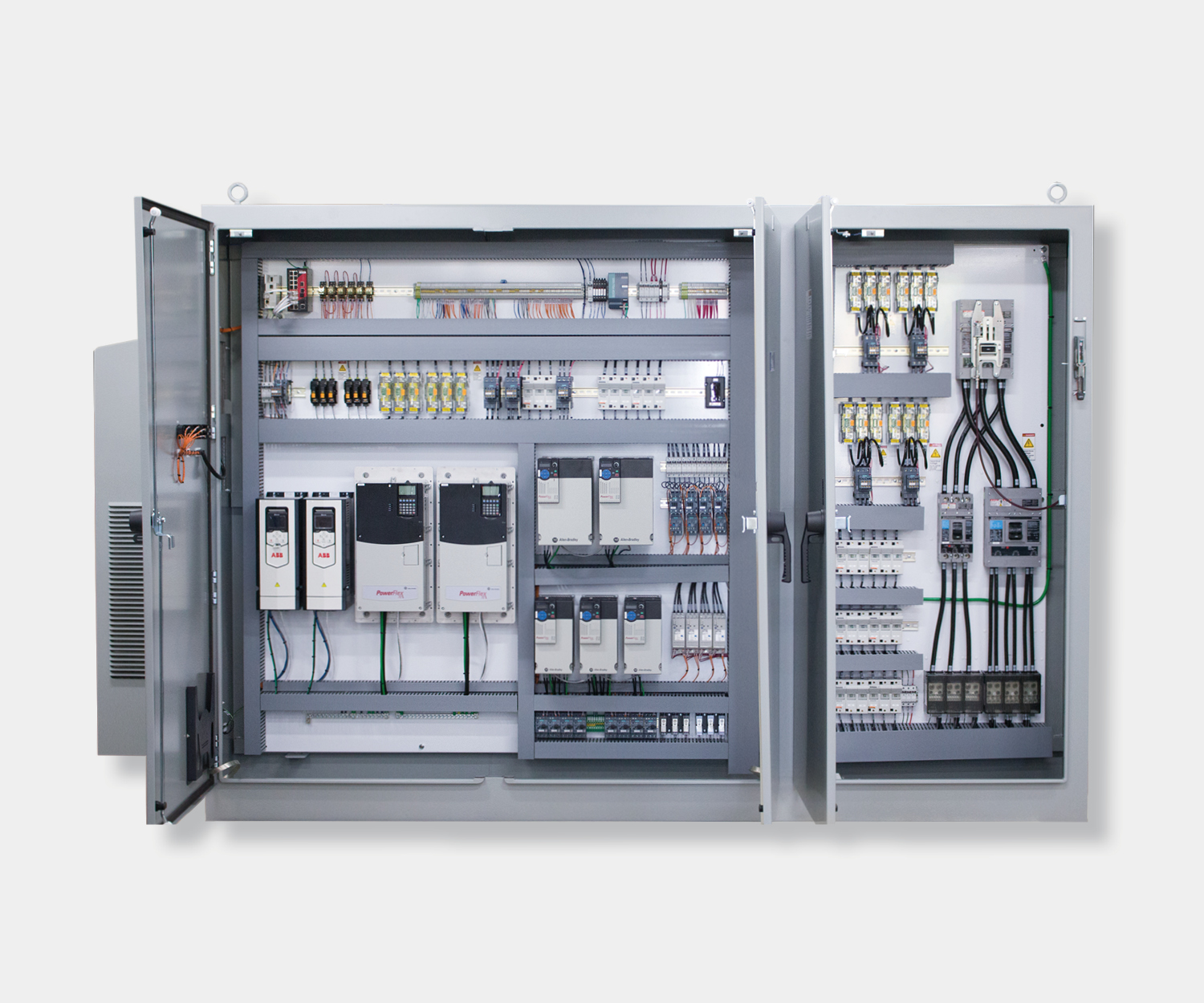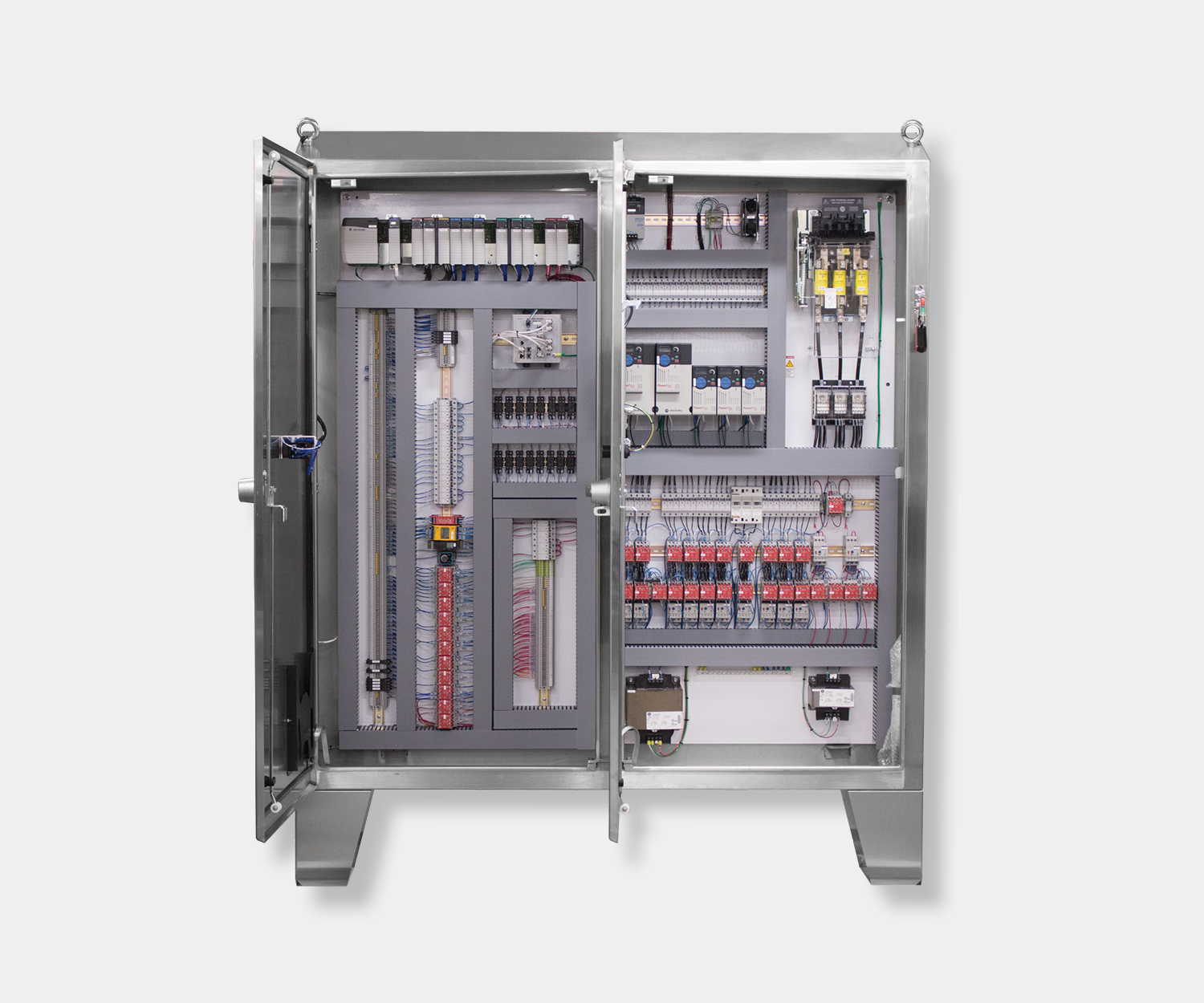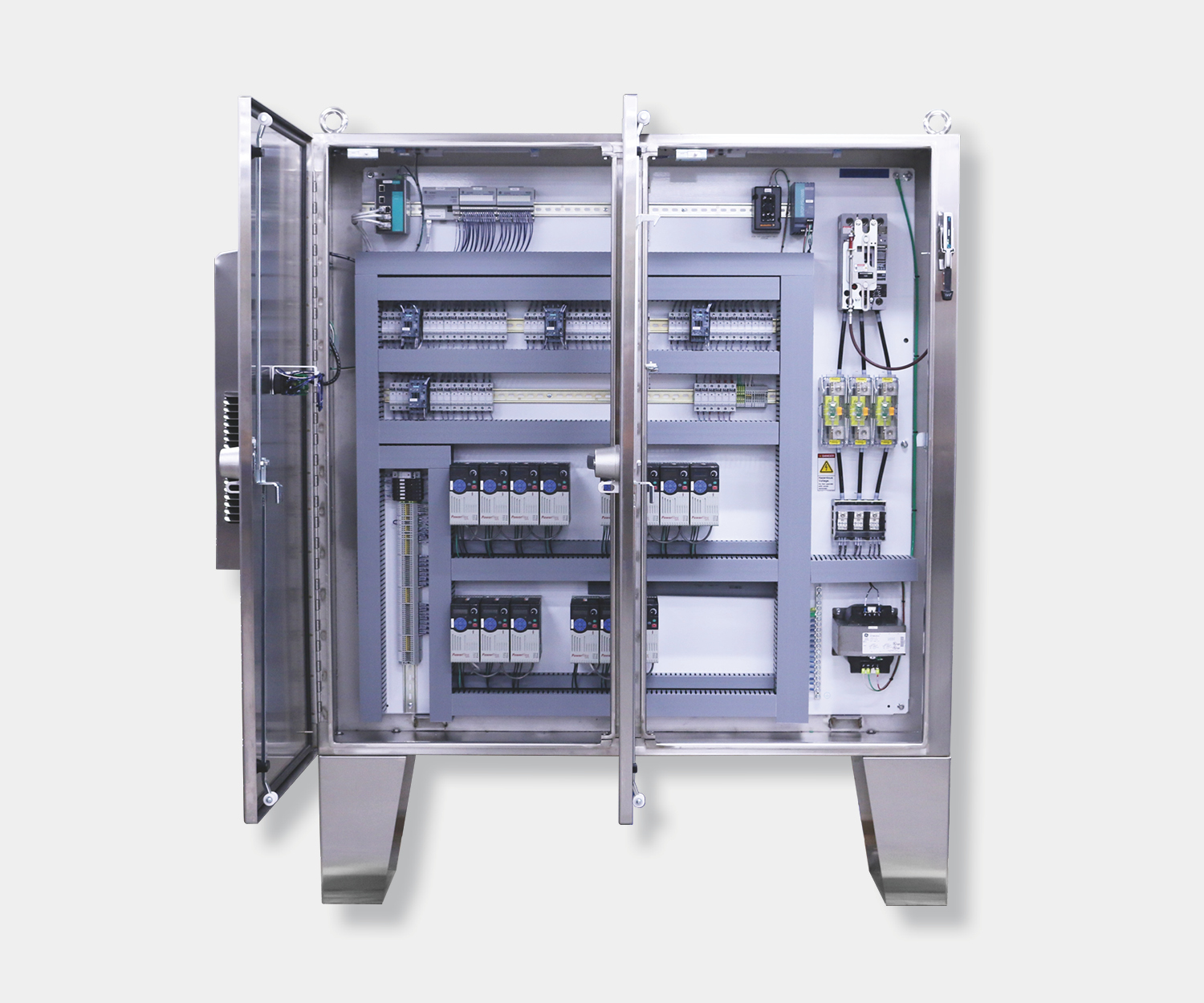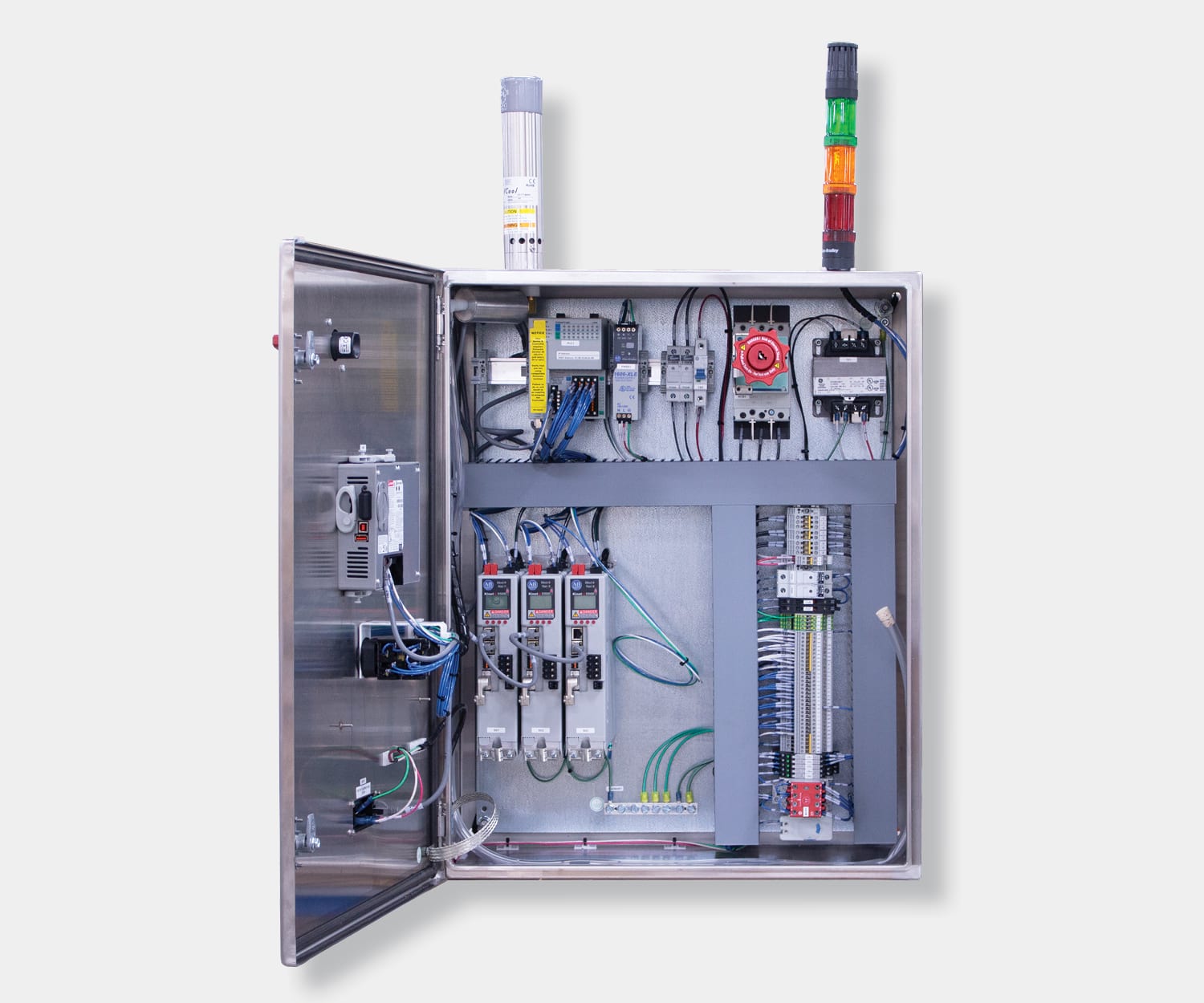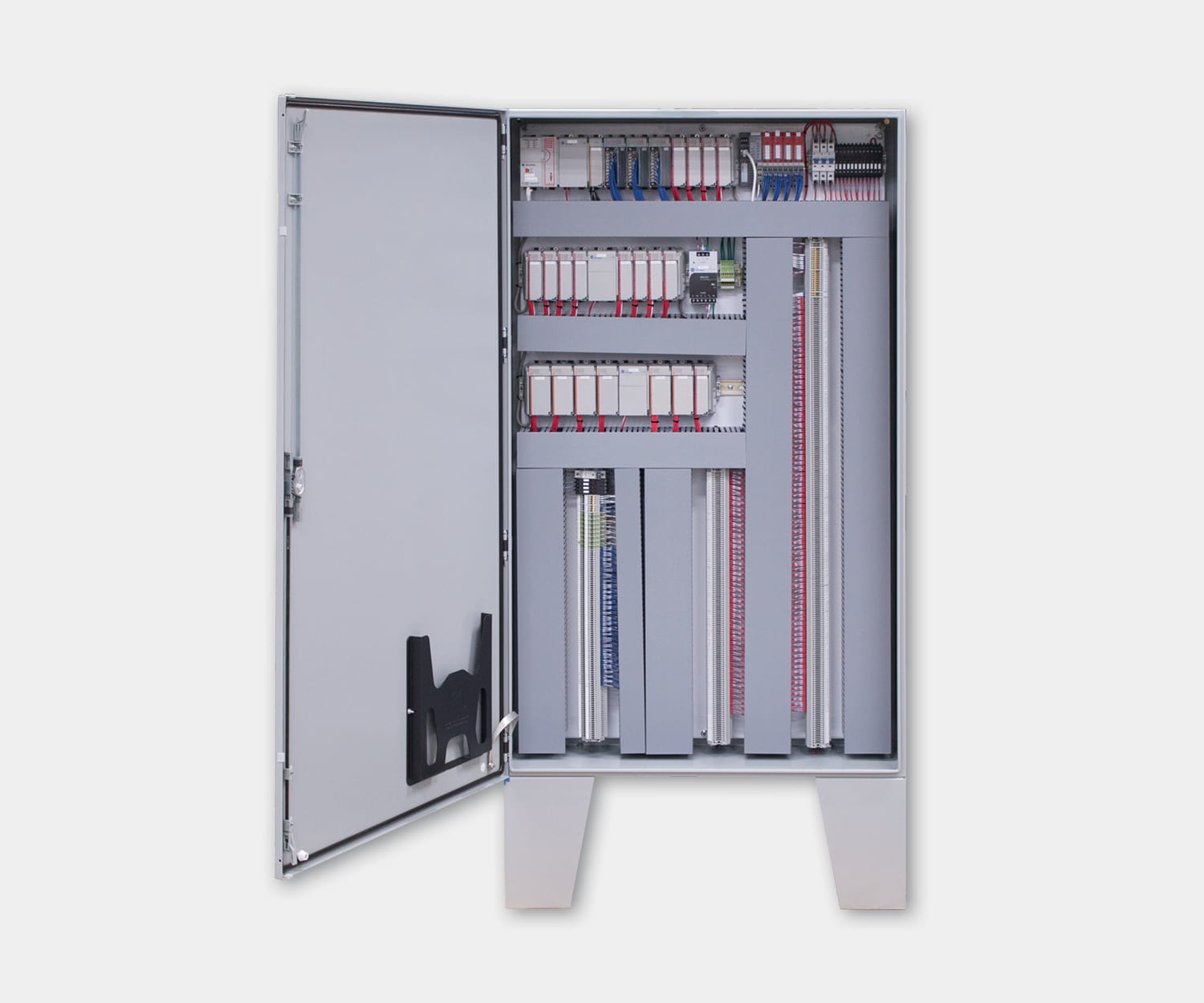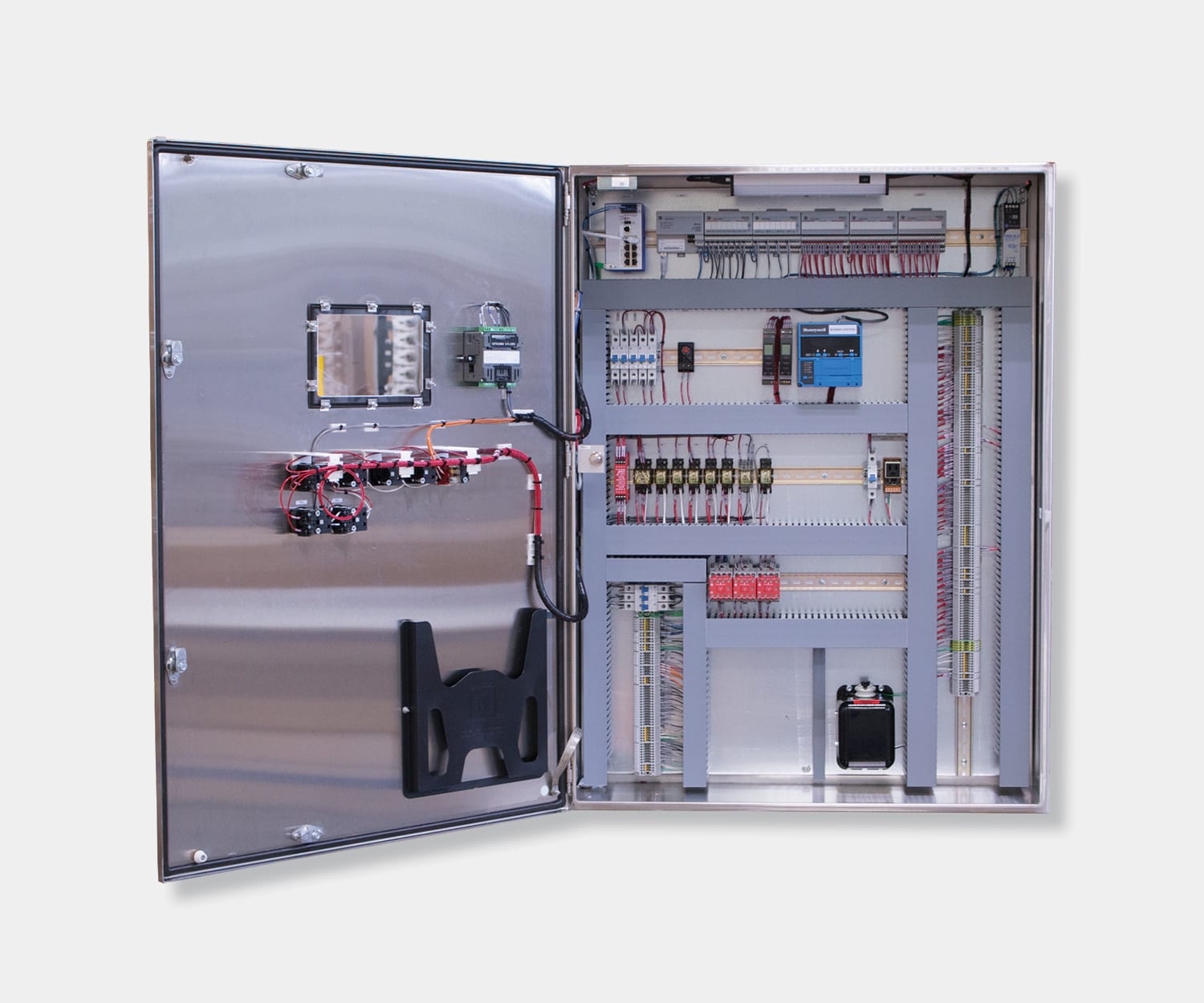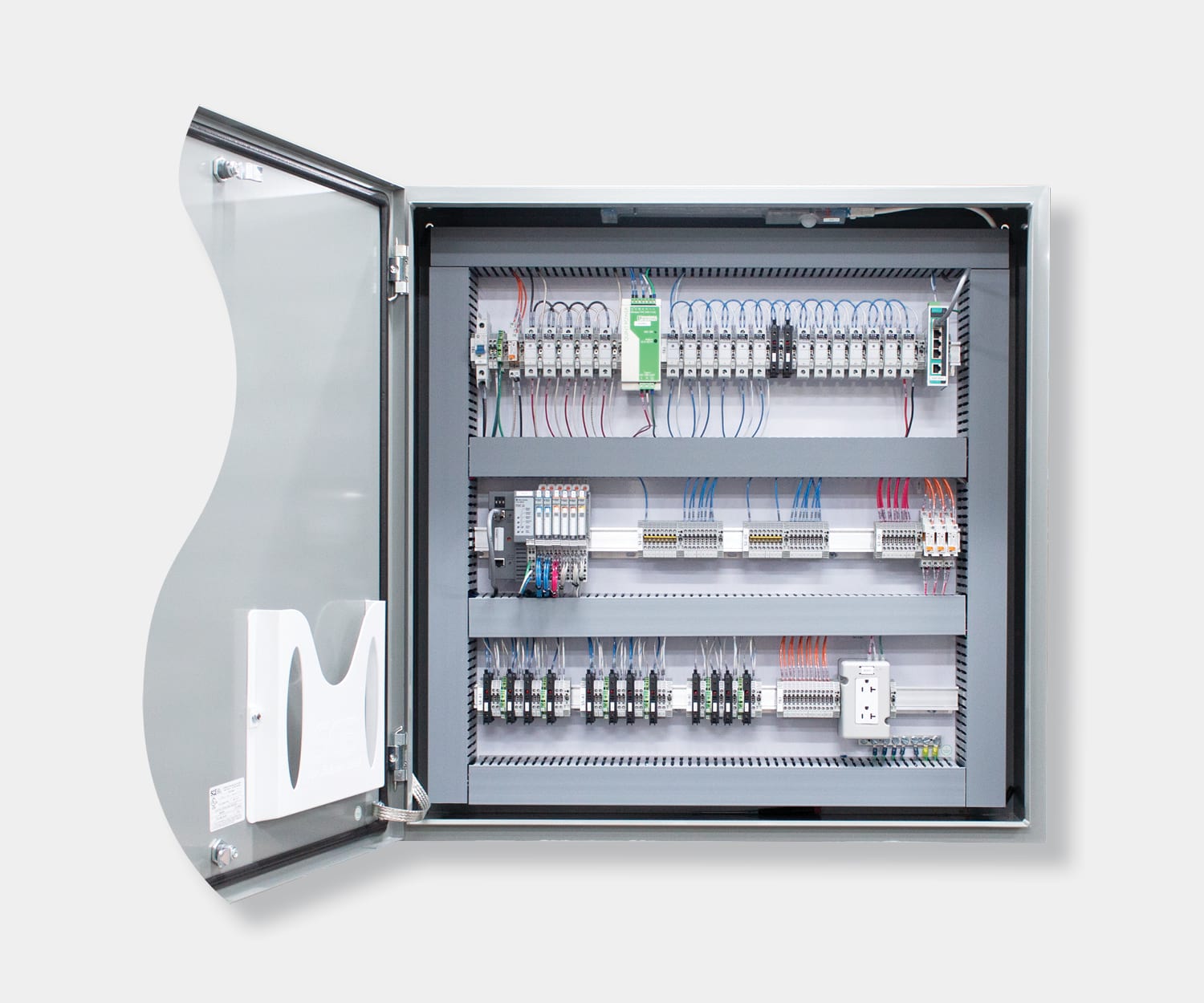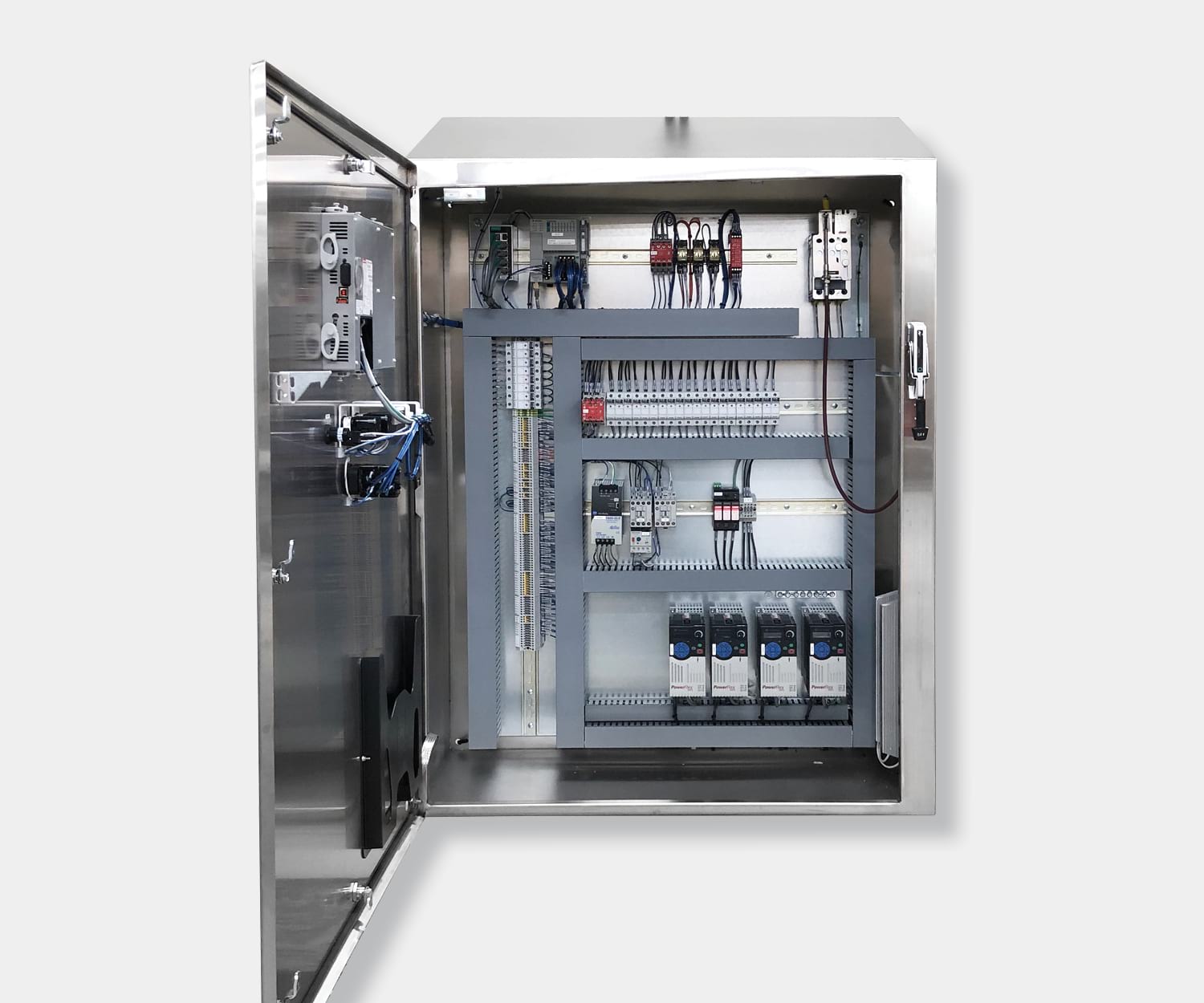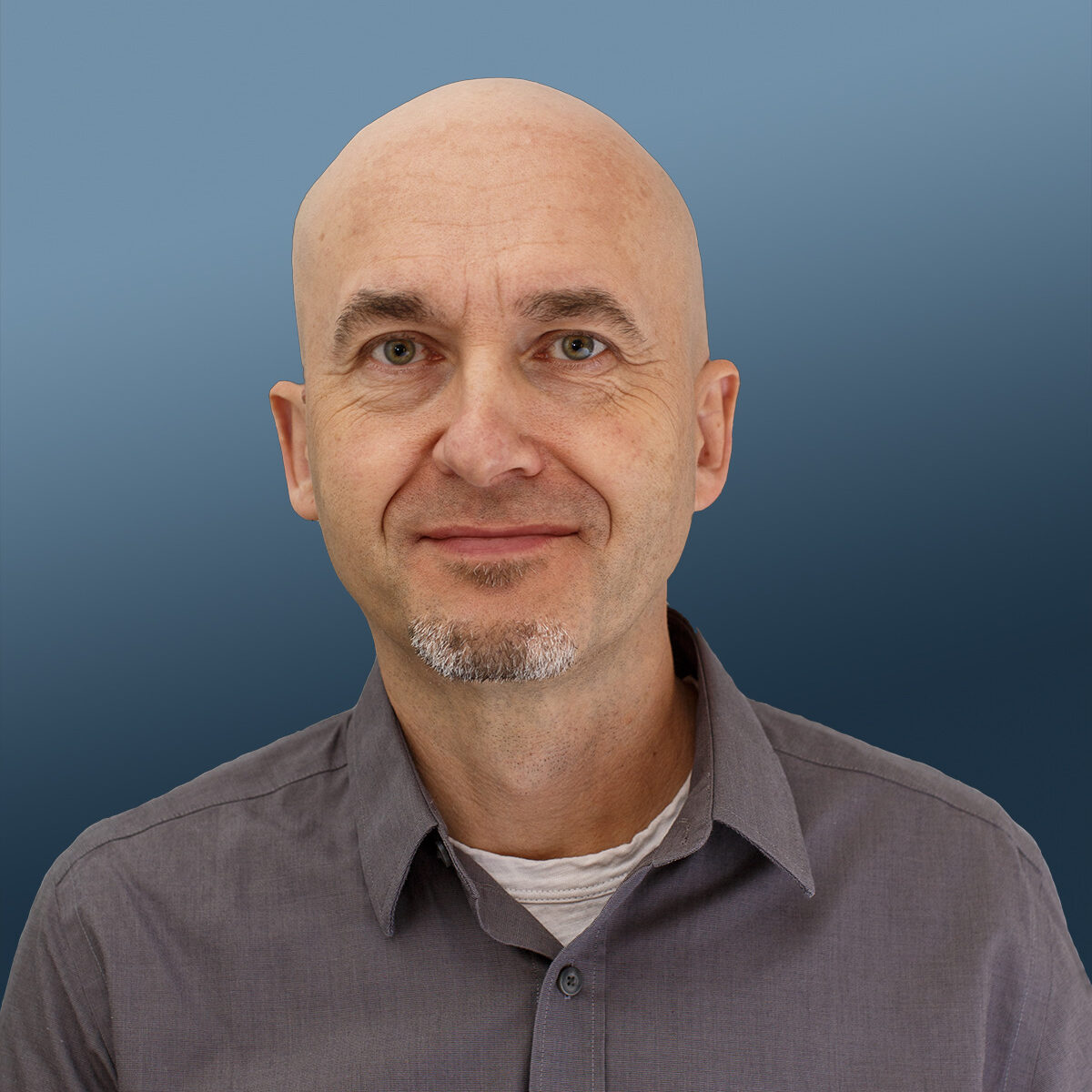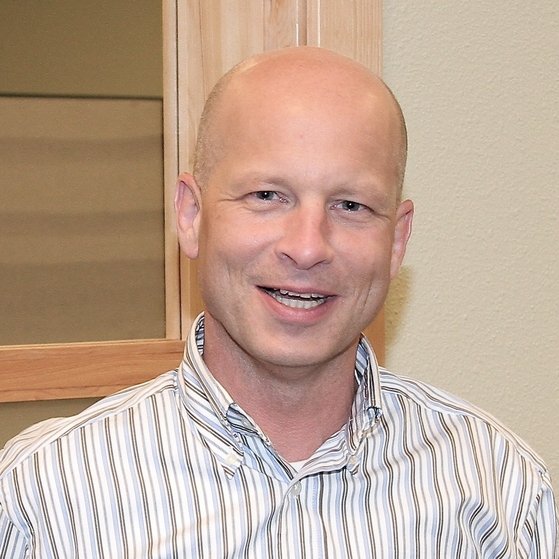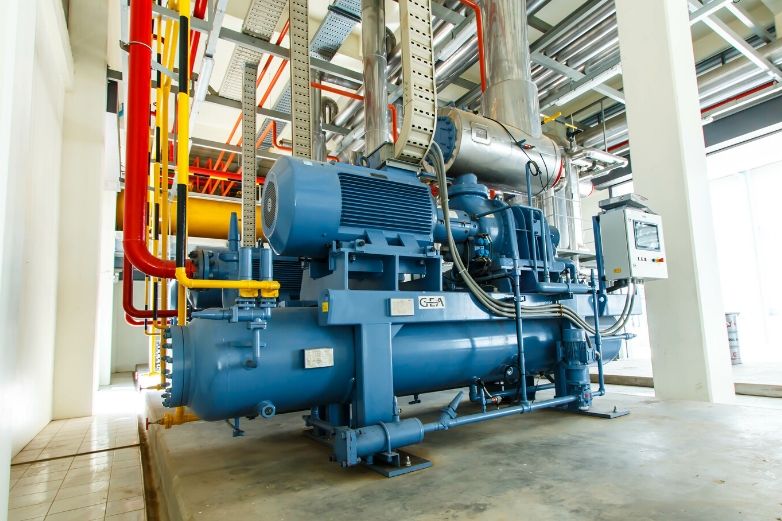
Industrial refrigeration systems in aerospace, food & beverage, energy, biotech, and data center facilities rely on sophisticated vapor compression refrigeration cycles to maintain precise environmental conditions. In these compression refrigeration cycles, compressors serve as the critical component for pressurizing vaporized refrigerant from low pressure and temperature to high pressure and temperature before traveling through a condenser.
However, selecting the right compressor type is only half the challenge. Modern industrial refrigeration systems require integrated control panels and automation systems to coordinate multiple compressors, monitor performance, and maintain compliance with industry regulations.
While compressors all serve the same primary function within an industrial refrigeration system, there are numerous types with varying methods of creating pressure and distinct control requirements. Understanding both the mechanical differences and automation needs helps facility managers make informed decisions about their refrigeration infrastructure.
Centrifugal Compressors
Centrifugal compressors, also known as turbo or radial compressors, pressurize refrigerant by forcing it through a rotating impeller. The impeller spins the refrigerant at increasing speed, generating kinetic energy that converts to pressure through a diffuser system. These compressors excel in large-scale industrial applications including:
- Data centers: Cooling massive server farms requiring consistent temperatures
- Food & beverage facilities: Large-scale cold storage and processing environments
- Aerospace testing: Environmental chambers for component testing
- Biotech manufacturing: Cleanroom temperature control systems
These high-capacity systems typically require sophisticated control panels with variable frequency drives (VFDs) and SCADA integration to manage multi-stage configurations. The control systems must coordinate compressor staging, monitor vibration, and integrate with facility automation networks for optimal energy efficiency.
Rotary-Vane Compressors
Rotary vane compressors utilize a rotating drive shaft positioned eccentrically within a cylindrical housing containing fixed inlet and discharge ports. Affixed to the drive shaft are adjustable vanes that slide in and out to maintain contact with interior walls, forming chambers with varying sizes. In industrial settings, rotary vane compressors serve specialized applications:
- Food & beverage: Product handling and packaging line cooling
- Biotech labs: Precise temperature control for sensitive processes
- Small-scale data center: Edge computing facility cooling
These compact units often integrate with building management systems through simple on/off controls, though advanced applications may require temperature sensors and automated staging controls.
Rotary-Screw Compressors
Rotary screw compressors contain two meshed male and female rotors rotating in opposite directions. Refrigerant enters through a suction port and gets trapped between the rotating rotors, with decreasing volume space compressing the refrigerant as it travels through.
The valve-free design allows high-speed operation with large flow rates and reduced vibration, making them ideal for:
- Energy facilities: Process cooling applications requiring continuous operation
- Manufacturing plants: Integration with robotic material handling systems
- Data centers: Reliable 24/7 cooling with minimal maintenance windows
Screw compressors typically require control panels with capacity modulation, oil management systems, and integration with facility SCADA networks. Advanced installations include predictive maintenance monitoring and energy optimization algorithms.
Rotary-Scroll Compressors
Rotary scroll compressors feature two intermeshing spirals with one fixed spiral and one orbiting spiral. As the spiral rotates, vapor pockets form and move toward the center, continuously decreasing in size to compress the refrigerant. The high efficiency and low noise make scroll compressors suitable for:
- Biotech cleanrooms: Contamination-sensitive environments
- Aerospace testing: Quiet operation for precision measurement environments
- Food processing: Areas requiring minimal vibration
These systems often integrate with precise temperature control loops and may require specialized control panels for maintaining tight temperature tolerances in regulated environments.
Reciprocating Compressors
Reciprocating compressors feature a design similar to combustion engines, containing two to six pistons in individual cylinders driven by a central crankshaft. The piston movement creates suction and compression cycles through inlet and discharge valves. The highly scalable design serves diverse industrial needs:
- Large food processing: High-capacity cold storage facilities
- Industrial manufacturing: Heavy-duty cooling for production equipment
- Energy facilities: Backup cooling systems for critical infrastructure
Reciprocating systems require sophisticated control panels to manage vibration, coordinate multiple cylinder operation, and integrate noise mitigation systems. Advanced installations include condition monitoring and automated maintenance scheduling.
Choosing the Right Control Integration
Selecting appropriate compressor types for industrial refrigeration systems requires understanding both mechanical performance and control system integration requirements. Factors to consider include:
- Facility automation architecture: Integration with existing SCADA and building management systems
- Compliance requirements: FDA validation for food/biotech, aerospace standards for testing facilities
- Scalability needs: Future expansion plans and modular control approaches
- Energy management: Integration with facility energy monitoring and optimization systems
Modern industrial refrigeration systems benefit from vendor-neutral control integration that coordinates multiple compressor types, optimizes energy consumption, and provides predictive maintenance capabilities.
Next Steps for Your Industrial Refrigeration Project
Understanding compressor types is just the beginning. The real challenge lies in designing control systems that integrate seamlessly with your facility operations while meeting industry compliance requirements.
Process Solutions specializes in creating custom control panels and automation systems for industrial refrigeration applications across aerospace, food & beverage, energy, biotech, and data center industries. Our vendor-neutral approach ensures your refrigeration control systems integrate effectively with existing facility automation while providing the scalability for future growth.
Ready to optimize your industrial refrigeration control systems? Contact us for a comprehensive assessment of your current setup and recommendations for enhanced automation integration that reduces energy costs and improves system reliability.
Frequently Asked Questions
Q: What control systems are required for industrial refrigeration compressors?
Industrial refrigeration compressors require control panels with motor starters, variable frequency drives (VFDs), temperature sensors, and pressure monitoring systems. Advanced installations integrate with SCADA networks for centralized monitoring and automated staging of multiple compressors. The specific control requirements depend on compressor type, facility size, and industry compliance standards.
Q: What compliance requirements apply to refrigeration systems in regulated industries?
Food & beverage facilities must meet FDA validation requirements, while biotech cleanrooms require contamination control standards and pharmaceutical-grade documentation. Aerospace testing facilities need precise temperature control with traceability, and data centers require energy efficiency compliance and redundancy standards. Each industry has specific control panel requirements that must integrate with facility monitoring systems.
Q: Can different compressor types be integrated into one control system?
Yes, modern control systems can coordinate multiple compressor types through vendor-neutral automation platforms that standardize communication protocols and operational interfaces.


